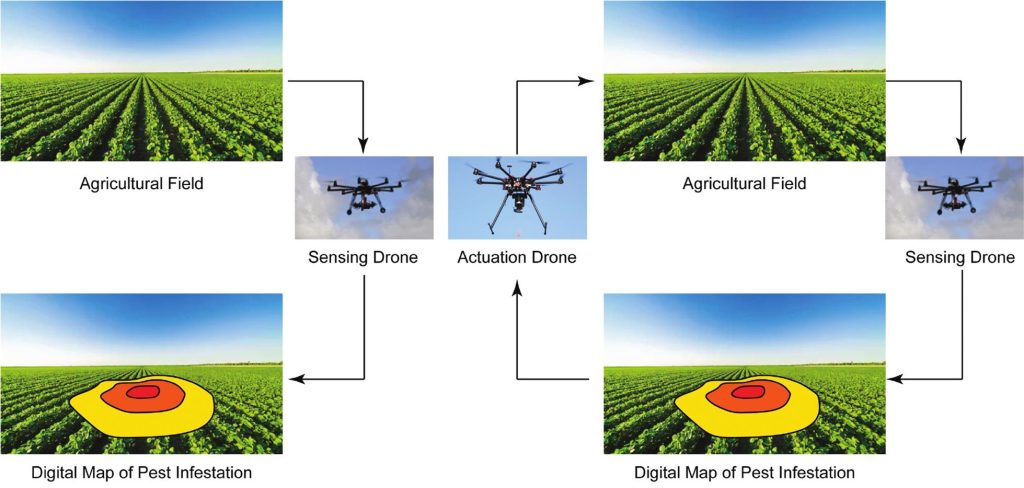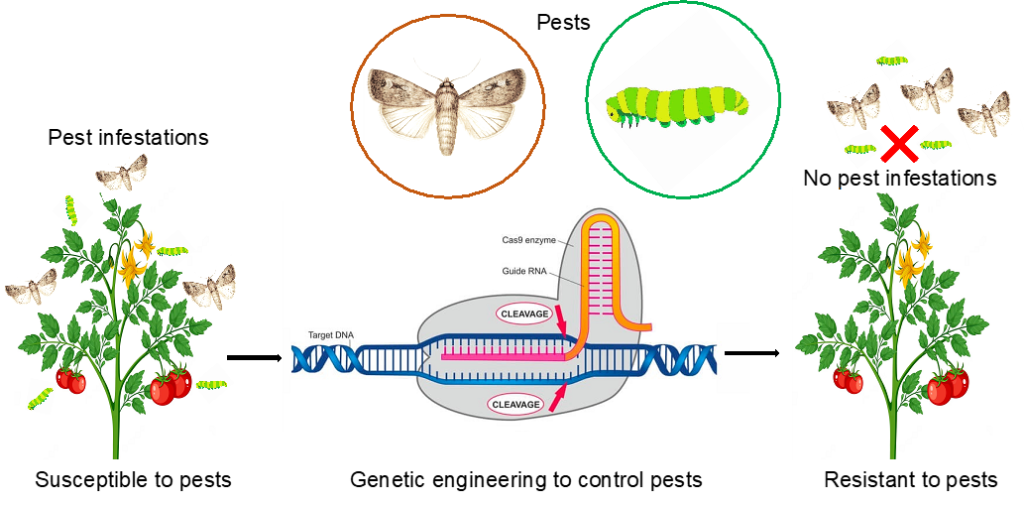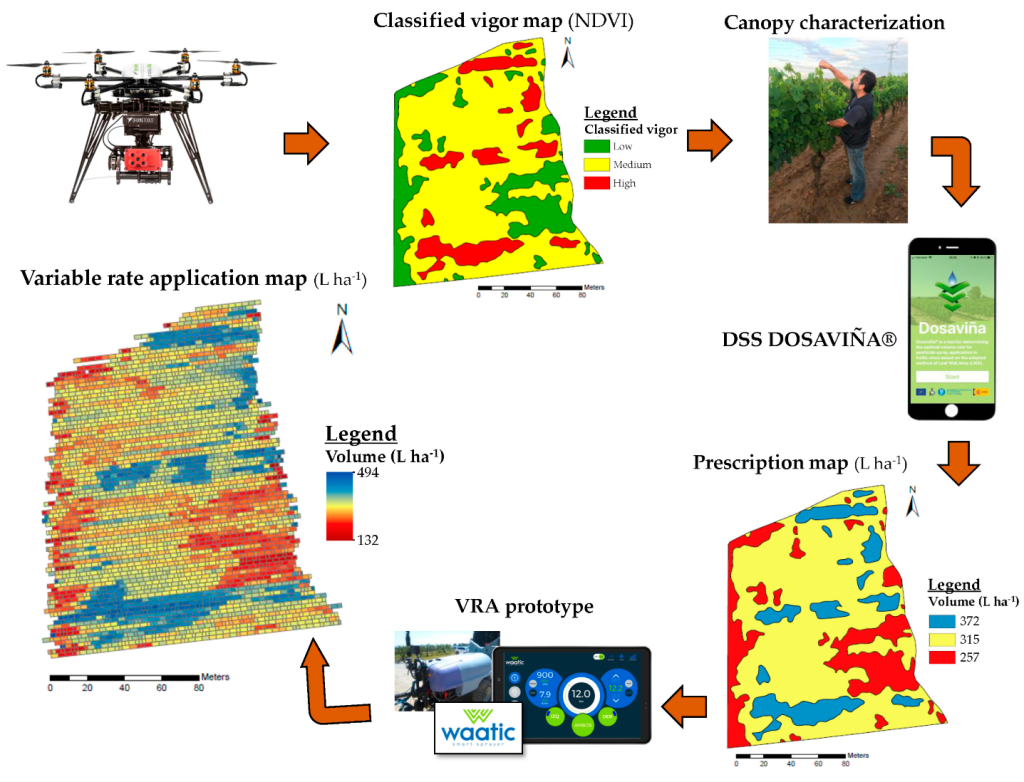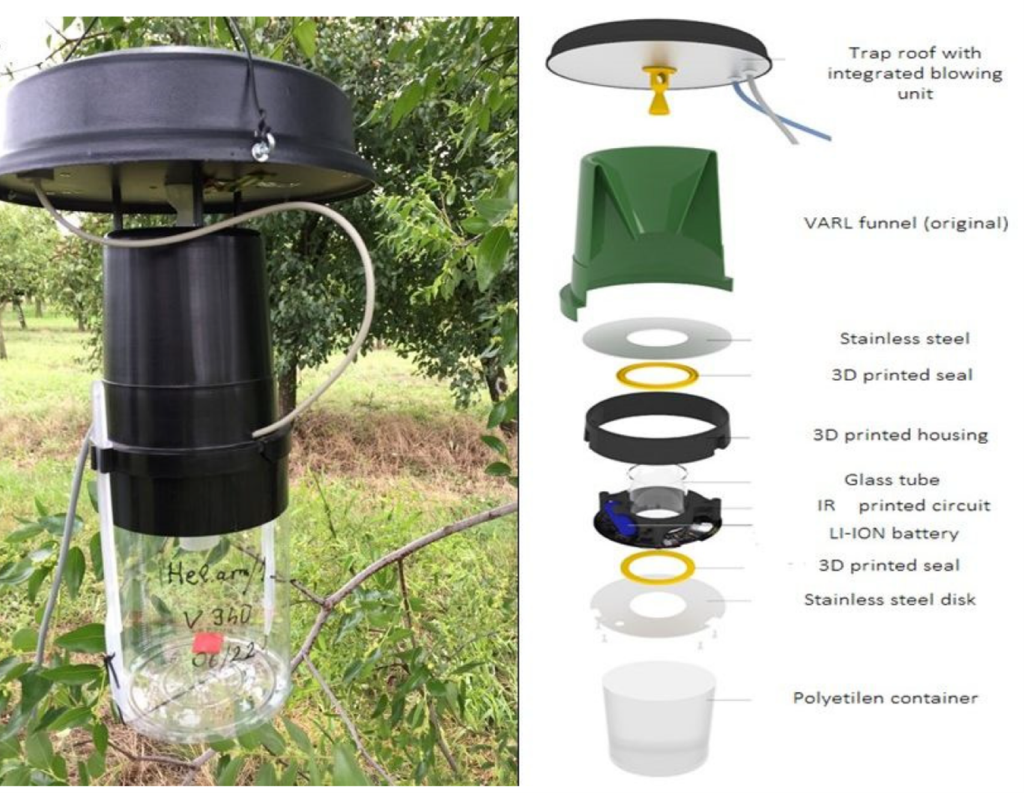Innovations & Technologies for Smarter Integrated Pest Management

This post is also available in:
This post is also available in:
![]() Ελληνικά (Greek)
Ελληνικά (Greek)
Precision Agriculture and IPM
Integrated Pest Management (IPM) is a long-term approach to pest control that stresses prevention, monitoring, and control through various tactics. Pest management has traditionally depended mainly on chemical pesticides. However, worries about their harmful effects on human health, the environment, and non-target organisms have led to the investigation of alternate and more advanced pest management methods. The landscape of IPM has drastically transformed due to technical improvements, resulting in the creation of more innovative and efficient pest management tactics.
Monitoring and remote sensing
Drones using specialized sensors, such as multispectral and thermal cameras, provide an aerial perspective of agricultural fields, forests, and other landscapes. These drones can take high-resolution photos and thermal data, revealing important information about crop health, stress, and insect infestations, even at a plant-specific level. Agronomists and farmers can discover indicators of insect damage early on by studying these photos, allowing them to take appropriate action quickly.
Integration of GPS and GIS in IPM
GPS and Geographic Information System (GIS) technologies have considerably improved the precision and efficiency of IPM. By combining GPS and GIS, precise spatial maps that accurately show the distribution and intensity of pest infestations may create.
Farmers can use this spatial data to develop tailored pest control methods, minimizing pest management product applicationσ. Unnecessary chemical usage is reduced by applying only control measures where required, lowering costs and environmental implications.
Analytics of data and artificial intelligence (AI)
Data analytics and Artificial Intelligence (AI) are critical for making sense of the massive amounts of data created in modern IPM. AI algorithms can analyze large amounts of data to find patterns and correlations. This analytical capability aids in predicting pest outbreaks, knowing pest behavior, and forecasting crop illnesses, all of which allow for early intervention and proactive pest control measures.

Figure 1: GIS mapping of pest infestations and drones equipped with multispectral thermal cameras for crop monitoring for precise pest control (Filho et al., 2019).
Genetic Engineering and Biotechnology
Biotechnology has significantly impacted IPM by providing novel pest control methods while lowering dependency on chemical pesticides. Scientists can use genetic engineering to add specific genes into crops that confer pest resistance or produce natural pesticides.
Bt (Bacillus thuringiensis) crops, for example, have been genetically modified to express insecticidal proteins that are poisonous to particular pests but not to beneficial insects or humans. Such crops can significantly minimize the need for synthetic chemical pesticides, lowering the likelihood of resistance development and protecting non-target creatures.

Figure 2: Genetic engineering for pest resistance in crops.
Precision Application Methods
Traditional pest management methods sometimes require pesticide blanket treatments, which can result in misuse and environmental pollution. Precision application techniques powered by technology provide a more targeted and efficient approach to pest management.
Variable rate technology (VRT) is an advancement that modifies pesticide application rates based on real-time data. The VRT system employs a comprehensive approach, considering various factors such as insect density, crop health status, and prevailing environmental conditions. By analyzing this diverse set of criteria, the VRT technology can accurately estimate the most suitable and efficient amount of pesticide needed for the application and ensures targeted and precise pesticide usage, enhancing pest control while minimizing environmental impact and optimizing crop health.

Figure 3: Variable rate technology for precise pesticide application (Campos et al., 2020).
Sensor-based Lure Traps
Monitoring pest populations is essential to IPM, and sensor-based traps have proven useful. These devices use pheromones or other attractants to draw insect species-specific sex, and an infrared (IR) sensor helps to detect insects, making pest population monitoring and assessment more manageable. 
Figure 4: Sensor-based lure traps for pest monitoring (Flórián et al., 2023).
Technology has transformed Integrated Pest Management by introducing new tools and ideas that improve the effectiveness, efficiency, and long-term viability of pest management systems. Remote sensing and GIS integration, data analytics, AI, and biotechnology, have paved the way for improved pest management approaches. Farmers and pest management experts may make data-driven decisions, accurately target interventions, and reduce dependency on chemical pesticides by leveraging the power of technology. This technique promotes sustainable agriculture, protects biodiversity, and adds to our ecosystems’ long-term viability. Continued investment in research and development will be critical in the future to improve and refine technical solutions for IPM. By adopting and supporting these advances, we can secure food security, environmental health, and a sustainable future for future generations. Technology-enabled Integrated Pest Management offers a viable path toward a harmonious coexistence of agriculture and nature.
References
Campos, J., Gallart, M., Llop, J., Ortega, P., Salcedo, R., & Gil, E. (2020). On-Farm Evaluation of Prescription Map-Based Variable Rate Application of Pesticides in Vineyards. Agronomy, 10(1), Article 1. https://doi.org/10.3390/agronomy10010102
Filho, F. H. I., Heldens, W. B., Kong, Z., & Lange, E. S. de. (2019). Drones: Innovative Technology for Use in Precision Pest Management. Journal of Economic Entomology, 113(1), 1–25. https://doi.org/10.1093/jee/toz268
Flórián, N., Jósvai, J. K., Tóth, Z., Gergócs, V., Sipőcz, L., Tóth, M., & Dombos, M. (2023). Automatic Detection of Moths (Lepidoptera) with a Funnel Trap Prototype. Insects, 14(4), Article 4. https://doi.org/10.3390/insects14040381
Romeis, J., Naranjo, S. E., Meissle, M., & Shelton, A. M. (2019). Genetically engineered crops help support conservation biological control. Biological Control, 130, 136–154. https://doi.org/10.1016/j.biocontrol.2018.10.001
Tang, Y., Chen, C., Leite, A. C., & Xiong, Y. (2023). Editorial: Precision control technology and application in agricultural pest and disease control. Frontiers in Plant Science, 14. https://www.frontiersin.org/articles/10.3389/fpls.2023.1163839
Cover picture: The picture was taken during experiments of the team of Dr. Tsagkarakis Antonis from the Agricultural University of Athens applying precision control of Dacus in olive orchards.








































































